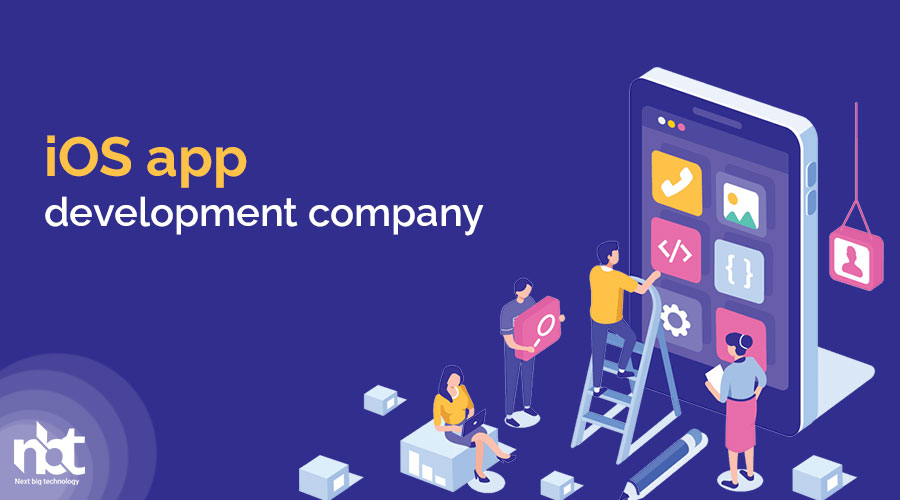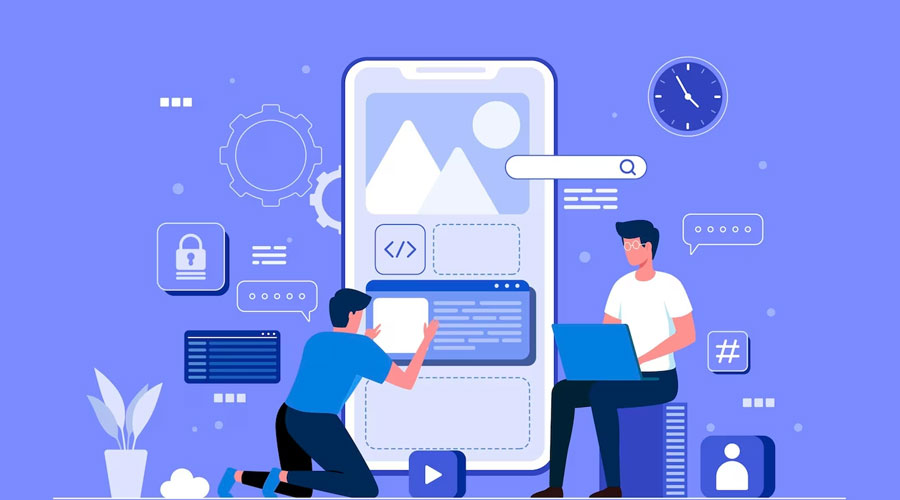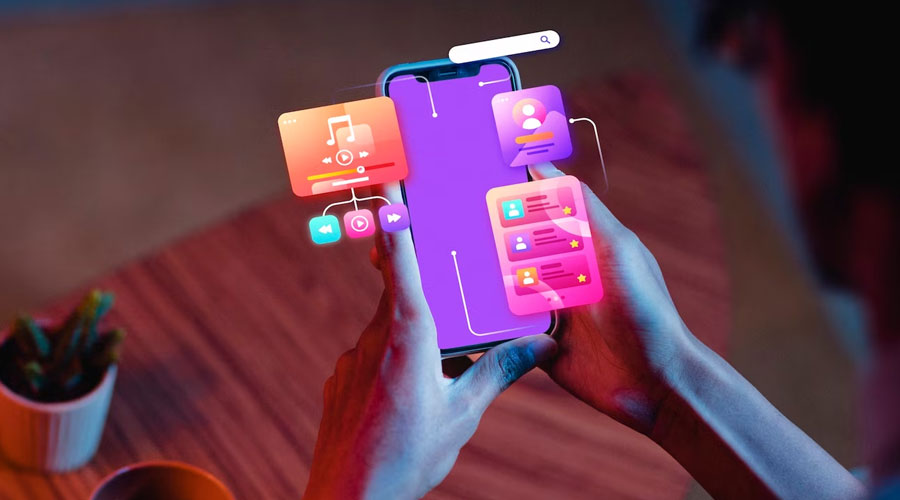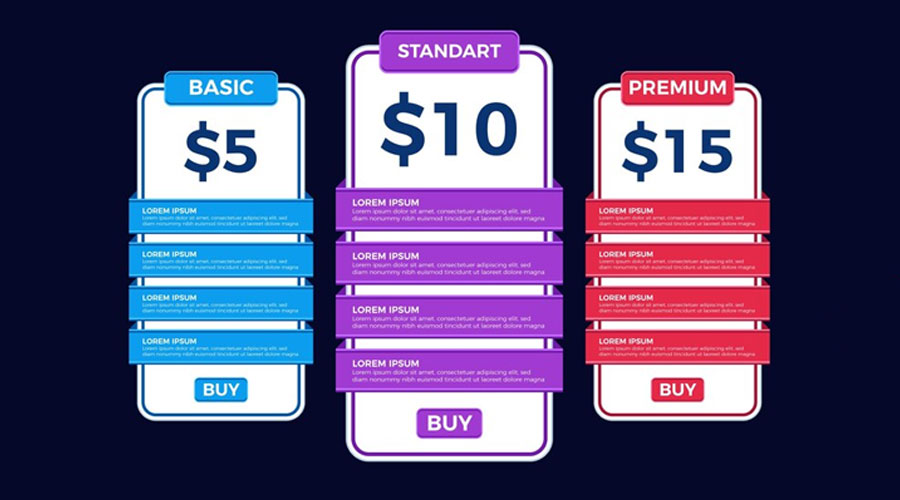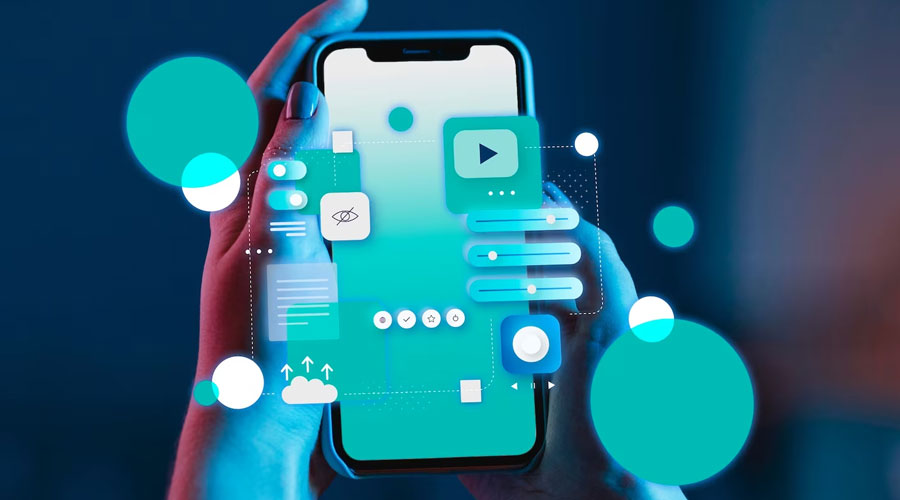Table of Contents
Introduction
In the ever-evolving landscape of mobile technology, the development of iOS applications has become a pivotal strategy for businesses and entrepreneurs looking to tap into Apple’s vast user base. Whether you’re aiming to create the next gaming sensation, a revolutionary productivity tool, or an innovative solution for a niche market, partnering with an iOS app development company can be the catalyst that turns your vision into reality. This introductory section provides an in-depth overview of the significance of iOS app development companies in today’s digital age.
The iOS Advantage
Why iOS? Apple’s iOS is renowned for its loyal and affluent user base. iOS users tend to be early adopters of technology and are more likely to spend on premium apps and in-app purchases, making it an enticing platform for businesses seeking a lucrative market. The Apple App Store, with its stringent review process, ensures a higher quality standard for apps, providing a trusted environment for users. This sets the stage for a successful iOS app, but it also means that the competition is fierce. To stand out in this competitive space, working with a seasoned iOS app development company is essential.
Unlocking the iOS Ecosystem
The iOS ecosystem is known for its seamless integration of hardware and software, leading to a superior user experience. With a variety of Apple devices – from iPhones and iPads to Apple Watches and Apple TVs – your iOS app can reach a broad audience. Moreover, iOS apps can leverage cutting-edge features like Face ID, augmented reality (AR) capabilities, and Apple’s proprietary programming language, Swift, to create immersive and high-performance applications.
The Role of iOS App Development Companies
So, why partner with an iOS app development company instead of embarking on a DIY journey? The answer lies in expertise, efficiency, and experience. iOS app development companies are dedicated teams of professionals with a deep understanding of the iOS platform, its best practices, and the intricacies of app development. They bring technical know-how, creative design skills, and the experience of developing a wide range of applications across various industries.
From Ideation to Launch
The journey of creating a successful iOS app starts with a solid idea and a comprehensive strategy. This is where iOS app development companies shine. They can help you refine your concept, conduct market research, and develop a clear project plan. With a well-defined roadmap, you can navigate the development process with confidence.
Design Excellence
One of the key elements that set iOS apps apart is their user interface (UI) and user experience (UX). Apple places a high premium on design aesthetics and usability. An experienced iOS app development company will have a team of designers who can create an app that not only looks stunning but also provides an intuitive and engaging user experience. This attention to design details can significantly impact user engagement and retention.
Technical Mastery
Under the hood, the technical aspects of iOS app development are equally critical. iOS app development companies employ developers proficient in Swift, the official programming language for iOS. They are well-versed in optimizing performance, ensuring security, and addressing the unique challenges of iOS development. They keep up with the latest updates and guidelines from Apple, guaranteeing that your app stays current and functional.
Quality Assurance
Before your app sees the light of day, it undergoes rigorous testing and quality assurance procedures. iOS app development companies have established testing methodologies, which include unit testing, integration testing, and user acceptance testing. These tests help identify and resolve bugs and issues to ensure that your app functions seamlessly on various iOS devices and versions.
Post-Launch Support
The relationship with your iOS app development company doesn’t end with the launch of your app. They provide post-launch support and maintenance to keep your app up-to-date and bug-free. In a rapidly evolving tech world, staying current is vital to success. With regular updates and ongoing technical support, your app can adapt to new iOS versions, take advantage of emerging features, and continue to meet user expectations.
iOS App Development Process
iOS app development is a complex and intricate process that involves multiple stages, from concept to launch. Whether you’re a business looking to expand your digital presence or an entrepreneur with a groundbreaking app idea, understanding the iOS app development process is essential. In this article, we’ll take a deep dive into the steps involved in creating a successful iOS app.
-
Ideation and Conceptualization
The iOS app development process begins with the initial concept and ideation phase. Here, you’ll brainstorm app ideas, define the app’s purpose, and identify your target audience. Market research is crucial to understand your competition and potential user needs. Once you have a clear concept, you can create a detailed project scope that outlines your app’s features and functionality.
-
Wireframing and Design
After solidifying your app concept, it’s time to create wireframes and design mockups. Wireframes are low-fidelity visual representations of your app’s layout, helping you plan the user interface (UI) and user experience (UX) design. The design phase includes creating high-fidelity mockups, selecting color schemes, and designing app icons. A well-thought-out design is essential for attracting users and ensuring a positive user experience.
-
Development
The development phase is where your app idea starts to take shape. In iOS app development, the primary programming language used is Swift. The development team writes code, integrates features, and ensures that the app functions smoothly. Development is an iterative process, often following agile methodologies, where regular updates and testing are conducted to identify and fix any issues.
-
Testing and Quality Assurance
Testing and quality assurance are integral parts of the iOS app development process. Quality assurance teams rigorously test the app for functionality, performance, security, and user experience. This phase includes unit testing, integration testing, and user acceptance testing. Any bugs or issues are identified and resolved, ensuring the app is stable and reliable.
-
Beta Testing
Before launching your app to the public, it’s a good practice to conduct beta testing. This involves releasing a beta version of your app to a select group of users, often referred to as beta testers. Their feedback can provide valuable insights into how the app performs in real-world scenarios. Beta testing helps in identifying any last-minute issues and fine-tuning the app.
- App Store Submission
Once your app is thoroughly tested and refined, it’s time to submit it to the Apple App Store. Prepare all necessary materials, including app descriptions, screenshots, app icons, and promotional materials. Comply with Apple’s guidelines and policies to ensure a smooth submission process. After review and approval, your app will become available for download in the App Store.
-
Marketing and Promotion
App development doesn’t end with the launch; it’s crucial to have a well-planned marketing and promotion strategy. Create a buzz around your app through social media, online advertising, and press releases. Utilize various marketing channels to reach your target audience and encourage downloads. App Store Optimization (ASO) is also essential for increasing visibility within the store.
-
Post-Launch Support and Updates
The launch of your app is just the beginning. Continuous post-launch support and updates are critical to maintain and improve your app’s performance. Monitor user feedback and address any issues promptly. Regularly release updates to add new features, improve existing ones, and stay compatible with the latest iOS versions.
-
App Analytics and User Feedback
To ensure the ongoing success of your iOS app, implement app analytics tools to gather data on user behavior, engagement, and usage patterns. Analyze this data to make informed decisions and drive improvements. Additionally, actively seek and listen to user feedback, as it can provide valuable insights for making your app more user-friendly and valuable.
-
Monetization Strategies
Depending on your app’s purpose, you may consider various monetization strategies. Popular options include in-app advertising, in-app purchases, subscription models, and paid downloads. Carefully assess your target audience and the most suitable monetization method for your app.
-
Legal and Privacy Compliance
Complying with legal and privacy regulations is a critical aspect of iOS app development. Ensure that your app adheres to Apple’s App Store Review Guidelines and policies. Additionally, address data privacy concerns by implementing necessary measures to protect user information and comply with relevant data protection laws.
-
Continuous Improvement
The final step in the iOS app development process is a commitment to continuous improvement. Listen to user feedback, stay updated with the latest iOS advancements, and keep your app relevant in a rapidly evolving digital landscape. Regularly assess and refine your app to meet changing user needs and expectations.
iOS App Development Technologies
When it comes to iOS app development, staying up-to-date with the latest technologies and trends is essential to create cutting-edge applications. Here are some additional iOS app development technologies that can enhance the functionality, performance, and user experience of your app:
- SwiftUI: SwiftUI is Apple’s modern and declarative framework for building user interfaces. It simplifies the process of creating complex user interfaces with a concise and intuitive syntax. SwiftUI provides a real-time preview of UI changes, making it easier to design and develop interactive user interfaces.
- Combine Framework: Combine is a framework introduced by Apple for handling asynchronous and event-driven code in a more structured and functional way. It’s particularly useful for managing data flow and responding to user interactions. Combine works seamlessly with SwiftUI, making it a powerful combination for building responsive and data-driven iOS apps.
- Augmented Reality (AR)Kit: ARKit is Apple’s framework for creating augmented reality experiences on iOS devices. It enables developers to build apps that overlay digital content on the real world, opening up opportunities in fields such as gaming, education, and e-commerce.
- Machine Learning and Core ML: Core ML is a framework that allows you to integrate machine learning models into your iOS apps. With Core ML, you can add features like image recognition, natural language processing, and sentiment analysis to your applications. You can create custom models or use pre-trained models from platforms like TensorFlow or PyTorch.
- Metal: Metal is Apple’s high-performance graphics and compute API. It’s ideal for creating graphically intensive apps, such as games and multimedia applications. Metal provides low-level access to the GPU, enabling developers to optimize rendering and achieve outstanding graphics performance.
- Firebase: Firebase is a powerful platform for developing mobile and web applications. It offers a wide range of services, including real-time databases, authentication, cloud storage, and cloud functions. Firebase simplifies backend development and enables you to build feature-rich, serverless apps.
- Swift Package Manager: Swift Package Manager is a tool for managing the distribution of Swift code and libraries. It allows you to easily integrate third-party libraries and dependencies into your iOS app projects. This helps streamline the development process and keep your codebase organized.
- Apple Pay and In-App Payments: To facilitate in-app purchases and provide a seamless payment experience, you can integrate Apple Pay or other payment gateways into your iOS app. Apple Pay offers secure and convenient payment options, enhancing the user experience for e-commerce and subscription-based apps.
- Core NFC: Core NFC is a framework that allows your iOS app to interact with NFC (Near Field Communication) tags and devices. This technology can be used for various applications, such as contactless payments, ticketing, and information sharing.
- Core Location and MapKit: Core Location and MapKit are essential for location-based apps. These technologies enable you to access GPS and location data and integrate maps and navigation features into your iOS applications. Whether you’re building a fitness app, a travel guide, or a ride-sharing service, these tools are invaluable.
- HealthKit: HealthKit is a framework that allows your app to access and share health and fitness data from a user’s Apple Health app. It’s useful for wellness, fitness, and healthcare-related applications, enabling you to access a wide range of health data, including step counts, heart rate, and more.
- Accessibility Features: To ensure your app is accessible to a wide range of users, it’s essential to incorporate accessibility features. iOS provides tools and guidelines to make your app usable by individuals with disabilities, including VoiceOver support, dynamic type, and color contrast settings.
By incorporating these iOS app development technologies into your projects, you can create apps that are more functional, engaging, and capable of meeting the diverse needs of iOS users. Staying current with the latest trends and technologies in the iOS ecosystem is key to delivering a competitive and user-friendly app.
iOS App Development Pricing
When it comes to iOS app development, one of the most critical aspects to consider is pricing. Developing an iOS app can be a significant investment, and understanding the costs involved is essential for making informed decisions. In this article, we will break down the various factors that influence iOS app development pricing, helping you navigate the financial aspects of bringing your app idea to life.
- App Complexity: The complexity of your app is a major determinant of the overall cost. Apps can be categorized into three main types: simple, moderately complex, and highly complex. Simple apps typically have basic features and minimal design complexity, while highly complex apps involve intricate features and advanced functionality. The more complex your app, the more time and resources will be required, which will, in turn, increase the cost.
- Design and User Experience (UI/UX): The design of your iOS app is a crucial factor in determining pricing. A well-designed app with a user-friendly interface (UI) and an excellent user experience (UX) often costs more. This is because designing a visually appealing and intuitive app takes time and skilled designers. An engaging design is essential for attracting and retaining users, so it’s an investment worth making.
- Features and Functionality: The number of features and functionalities you want to include in your app directly impacts the development cost. Features like in-app purchases, user authentication, push notifications, and geolocation services can increase the complexity of the app and require additional development time. It’s essential to carefully prioritize and choose the features that are crucial for your app’s success to manage costs effectively.
- Platform and Device Compatibility: If you plan to develop your app for multiple iOS devices and platforms, such as iPhone, iPad, and Apple Watch, the cost will increase. Each platform and device comes with its own set of considerations and adjustments, as the app needs to be optimized for various screen sizes and resolutions.
- Backend Development: Some apps require a backend server for data storage, user management, and other functionalities. The complexity of the backend system, the choice of server technology, and the need for data storage and processing can significantly affect the cost. Make sure to discuss your backend requirements with the development team.
- Third-Party Integrations: If your app needs to integrate with third-party services or APIs, such as payment gateways, social media platforms, or external data sources, this can add to the development costs. Integration with third-party services often requires extra development work to ensure compatibility and functionality.
- App Security and Data Privacy: Ensuring the security and privacy of user data is a paramount concern in app development. Implementing robust security measures and adhering to Apple’s guidelines for data protection may require additional development time and investment. Neglecting security can lead to costly breaches and damage your app’s reputation.
- Quality Assurance and Testing: Rigorous testing and quality assurance are essential for delivering a bug-free and reliable app. The cost of testing and quality assurance depends on the app’s complexity and the number of platforms it needs to support. This includes various types of testing, such as unit testing, integration testing, and user acceptance testing.
- Post-Launch Support and Maintenance: Once your app is live, it requires ongoing maintenance and updates to stay current with the latest iOS versions and address any issues that may arise. It’s important to budget for post-launch support and maintenance, as neglecting this aspect can lead to increased costs in the long run.
- iOS Development Team: The choice of the iOS app development company or team plays a significant role in pricing. Experienced and skilled developers may charge a higher rate, but their expertise can result in a more efficient development process and a higher-quality end product. Consider the balance between cost and expertise when choosing your development team.
- Location of Development Team: The location of your development team can also influence pricing. Development teams in regions with a lower cost of living may offer more competitive rates, but it’s essential to consider language barriers, time zone differences, and the quality of work when making your decision.
- App Submission and Maintenance Costs: Don’t forget to budget for the costs associated with submitting your app to the Apple App Store and maintaining your developer account. Apple charges an annual fee for access to its developer program.
Case Studies and Success Stories
In the quest to find the ideal iOS app development company for your project, you need more than just a checklist of criteria. Real-world success stories and case studies can provide invaluable insights into a company’s capabilities, approach, and the outcomes they’ve achieved for their clients. In this article, we’ll delve into a selection of case studies and success stories from top iOS app development companies. These real examples will help you understand how the right partnership can lead to remarkable results.
Case Study 1: Shazam
Company: Shazam was founded in 1999, and its music recognition app has since become one of the most iconic and widely used iOS applications. In 2018, Shazam was acquired by Apple Inc.
The Challenge: Shazam’s music recognition algorithm required highly efficient and accurate performance. The app had to identify a song in just a few seconds.
The Solution: Shazam collaborated with iOS app development companies to continuously improve the app’s speed, efficiency, and user interface. This involved constant updates and optimizations, taking advantage of Apple’s latest technologies.
The Result: Shazam became a household name, boasting hundreds of millions of downloads. Its success led to an acquisition by Apple, further exemplifying the value of a well-executed iOS app.
Key Takeaway: Continuous improvements and staying current with iOS updates were vital in Shazam’s success. Collaborating with a development team that understood the intricacies of iOS development was essential.
Case Study 2: Airbnb
Company: Airbnb, the online marketplace for lodging and travel experiences, has transformed the hospitality industry.
The Challenge: Airbnb needed a mobile app that provided a seamless user experience for both hosts and guests. The app had to facilitate bookings, messaging, and payment processing.
The Solution: Airbnb partnered with a prominent iOS app development company to create an intuitive and visually appealing app. The team focused on responsive design, fast performance, and robust security measures.
The Result: The Airbnb app has been downloaded millions of times and played a pivotal role in the company’s rapid expansion. It has helped Airbnb maintain a strong position in the competitive travel industry.
Key Takeaway: User experience and user interface design are critical for success in the travel and hospitality sector. A partnership with skilled iOS developers ensured Airbnb’s app achieved this.
Case Study 3: Duolingo
Company: Duolingo is a language learning platform that offers free language education.
The Challenge: Duolingo aimed to create a language learning app that was engaging, effective, and accessible to people worldwide.
The Solution: Duolingo’s development team partnered with iOS app developers who had expertise in gamification and interactive learning. They designed the app to be user-friendly, fun, and highly interactive.
The Result: Duolingo’s app became a hit and was consistently ranked as one of the best language learning apps available. It reached over 300 million downloads globally, making it a pioneer in the edtech industry.
Key Takeaway: Tailoring your app to your target audience’s preferences and needs can lead to significant success. Duolingo’s choice of an iOS app development company with expertise in interactive education was instrumental.
Case Study 4: Uber
Company: Uber revolutionized the transportation industry by offering a ride-hailing app.
The Challenge: Uber faced the challenge of creating a reliable and user-friendly app that allowed users to book rides, track drivers, and make payments seamlessly.
The Solution: Uber partnered with a top iOS app development company to build an app with a responsive GPS system, a secure payment gateway, and a rating system for drivers and passengers.
The Result: Uber’s app became a global phenomenon, transforming the way people commute in urban areas. It’s a prime example of how a well-developed iOS app can disrupt an entire industry.
Key Takeaway: Uber’s emphasis on real-time tracking, payment security, and user feedback mechanisms demonstrates how attention to details can propel an app to success.
Success Story 1: Instagram
Company: Instagram, now owned by Facebook, is a social media platform focused on photo and video sharing.
The Success: Instagram started as a simple photo-sharing app. It rapidly gained popularity, and its user base grew exponentially. Its success was built on the foundations of a well-designed iOS app that was easy to use, with features like filters and comments that enhanced user engagement.
Key Takeaway: Simplicity and a deep understanding of your target audience can be key to creating a successful iOS app.
Success Story 2: WhatsApp
Company: WhatsApp is a widely used instant messaging application.
The Success: WhatsApp’s success can be attributed to its focus on reliable, real-time messaging, and end-to-end encryption. The app was engineered for a seamless user experience and quickly became a global messaging giant.
Key Takeaway: Prioritizing the core functionality of your app and ensuring privacy and security are paramount can lead to widespread adoption and success.
Future of iOS App Development
The world of iOS app development is in a constant state of evolution, driven by technological advancements, changing user preferences, and the ever-growing demand for innovative mobile applications. As we look to the future, it’s important to keep a finger on the pulse of the industry’s latest trends and innovations. In this article, we will explore the exciting future of iOS app development and the key trends that are set to shape the landscape in the coming years.
- Augmented Reality (AR) and Virtual Reality (VR)
Augmented Reality and Virtual Reality have been on the rise in recent years, and they are poised to play a significant role in the future of iOS app development. Apple’s ARKit and ARCore by Google have made it easier for developers to create AR and VR experiences. Expect to see more iOS apps that seamlessly blend the physical and digital worlds, whether it’s for gaming, navigation, or educational purposes.
- 5G Connectivity
The rollout of 5G networks is set to revolutionize the mobile app development landscape. With faster data speeds and lower latency, iOS apps can take advantage of real-time, high-quality streaming, improved multiplayer gaming experiences, and enhanced augmented reality applications. Developers will need to adapt to this new standard to ensure their apps can leverage the full potential of 5G.
- Machine Learning and Artificial Intelligence
Machine learning and AI have already made their mark in iOS app development, from Siri’s voice recognition to personalized app recommendations. In the future, we can anticipate AI-powered apps that provide even more personalized experiences, predictive analytics, and intelligent automation. These technologies will play a pivotal role in enhancing user engagement and retention.
- Internet of Things (IoT) Integration
The IoT ecosystem is expanding rapidly, with smart devices becoming more integrated into our daily lives. iOS app developers will need to embrace this trend by creating applications that can communicate with and control IoT devices seamlessly. This could include everything from smart home automation to wearables and connected vehicles.
- SwiftUI and Cross-Platform Development
Apple’s SwiftUI has been gaining traction as a user interface toolkit that allows developers to build native iOS, macOS, watchOS, and tvOS apps using a single codebase. This will streamline the development process, making it more efficient and cost-effective. Expect more iOS app development companies to adopt SwiftUI and explore cross-platform app development options.
- Enhanced Privacy and Security
With growing concerns about data privacy and security, Apple has been taking steps to protect user data. The company’s App Tracking Transparency (ATT) framework is a prime example. In the future, iOS app developers will need to prioritize user privacy, and this will likely lead to a more stringent app review process. Building secure apps that respect user privacy will be paramount.
- Health and Wellness Apps
The COVID-19 pandemic accelerated the adoption of telehealth and wellness apps, and this trend is expected to continue. iOS app development in the health and wellness sector will focus on providing remote healthcare services, fitness tracking, and mental health support. These apps will play a vital role in improving the overall well-being of users.
- Blockchain and Cryptocurrency
Blockchain technology has the potential to disrupt various industries, and iOS app development is no exception. Expect to see more iOS apps that incorporate blockchain for secure transactions, digital identity verification, and even cryptocurrency wallets. Blockchain has the potential to revolutionize payment systems and data security within apps.
- Progressive Web Apps (PWAs)
While native iOS app development remains dominant, Progressive Web Apps are gaining traction. PWAs offer the advantage of cross-platform compatibility and reduced data usage, making them appealing to users and businesses alike. The future of iOS app development might see more apps exploring the PWA route alongside traditional native development.
- Voice and Gesture Control
Voice-controlled and gesture-controlled apps have been on the horizon for a while, and their potential is vast. As natural language processing and gesture recognition technologies advance, iOS app developers will likely create innovative applications that respond to voice commands and gestures, making user interactions more intuitive and accessible.







